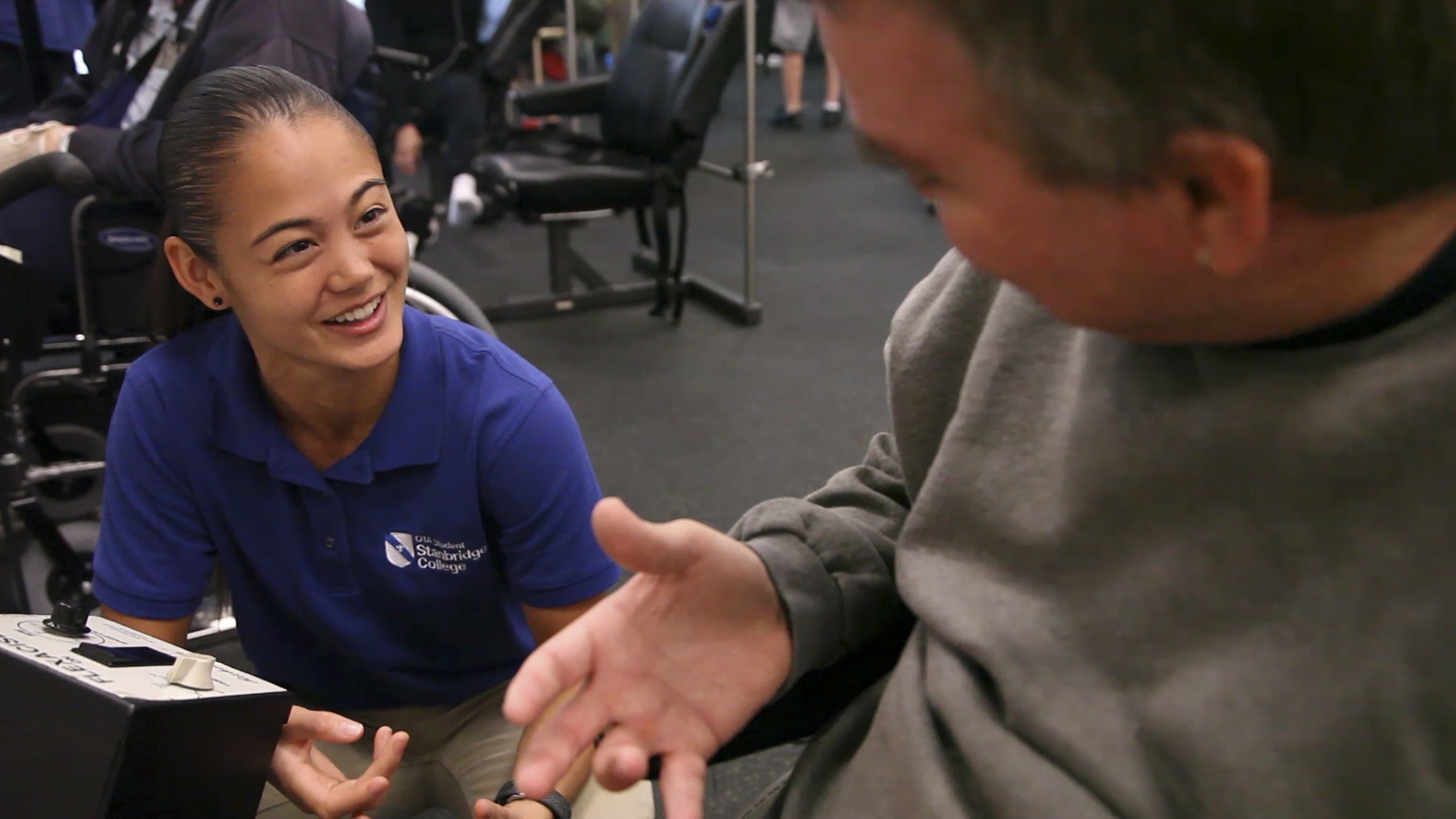OTA Student Gets Up Close with Rehabilitation Technology through Service

Occupational Therapy Assistant (OTA) Student and California Campus Compact Student Fellow, Patricia Hansen, aims to encourage and support individuals undergoing therapy for traumatic brain injury. The ever-evolving technological advances in the occupational therapy field are a complex yet exciting part of occupational therapy that offers a challenge for OTAs to stay on top of the best possible treatments for their patients.
While she volunteered at High Hopes Head Injury Program, she was able to connect with her patients on a personal level and help create a customized therapy for their specific needs, while also increasing visibility of individuals with disabilities. Ms. Hansen has stated that working with the robotics team has allowed her to better understand the struggles that disabled patients face in occupational therapy, but also how to use the most state-of-the-art technology can help them.
“At High Hopes Head Injury Program, I worked with individuals who have survived various types of head injuries. The program director at High Hopes, Mark Desmond, allowed me to work not only with their occupational therapist, but also with their speech therapist, music teacher, cognitive relearning teacher, art teacher, and their robotics team,” Ms. Hansen said. “This allowed me to not only see how my future line of work as an occupational therapy assistant ties into these fields, but it also allowed me to see the difficulties faced by this population within these areas.”
The Lokomat is the robotic walking therapy machine at High Hopes, and it has shown tremendous results for patients who cannot walk, who walk with lacking strength or coordination, or who have weakened torso or head control. Combining a treadmill with dynamic weight support equipment and an individually adjustable exoskeleton for the legs, the Lokomat system utilizes task-specific training, patient engagement, and intensive therapeutic volume. It also provides sensory feedback so patients “feel” as though they are walking over actual terrain. That sensory input is vitally important as the patients try and re-teach the brain and body to bypass neurological trouble spots within each patient.
“Lokomats are robots that you can stand up in and attach to your legs,” Ms. Hansen explained. “They adjusted to exact angles in a person’s knees. There is an individual at the program that has a 10-second memory, yet he continues to make improvements with his walking every day by using the Lokomat. That muscle memory factor is huge with brain injury.”
Through her time at High Hopes, Ms. Hansen has also been able to better understand her future clients. “Because of my experience at High Hopes, I feel more confident entering my OTA fieldwork this upcoming term and I have learned a lot about the human brain,” she said. Ms. Hansen has received the Newman Civic Fellowship, and with this valuable opportunity, she will be able to learn about and utilize the constant advances in technology related to occupational therapy.
For more information about the Occupational Therapy Assistant degree program, visit www.stanbridge.edu/program/ota.